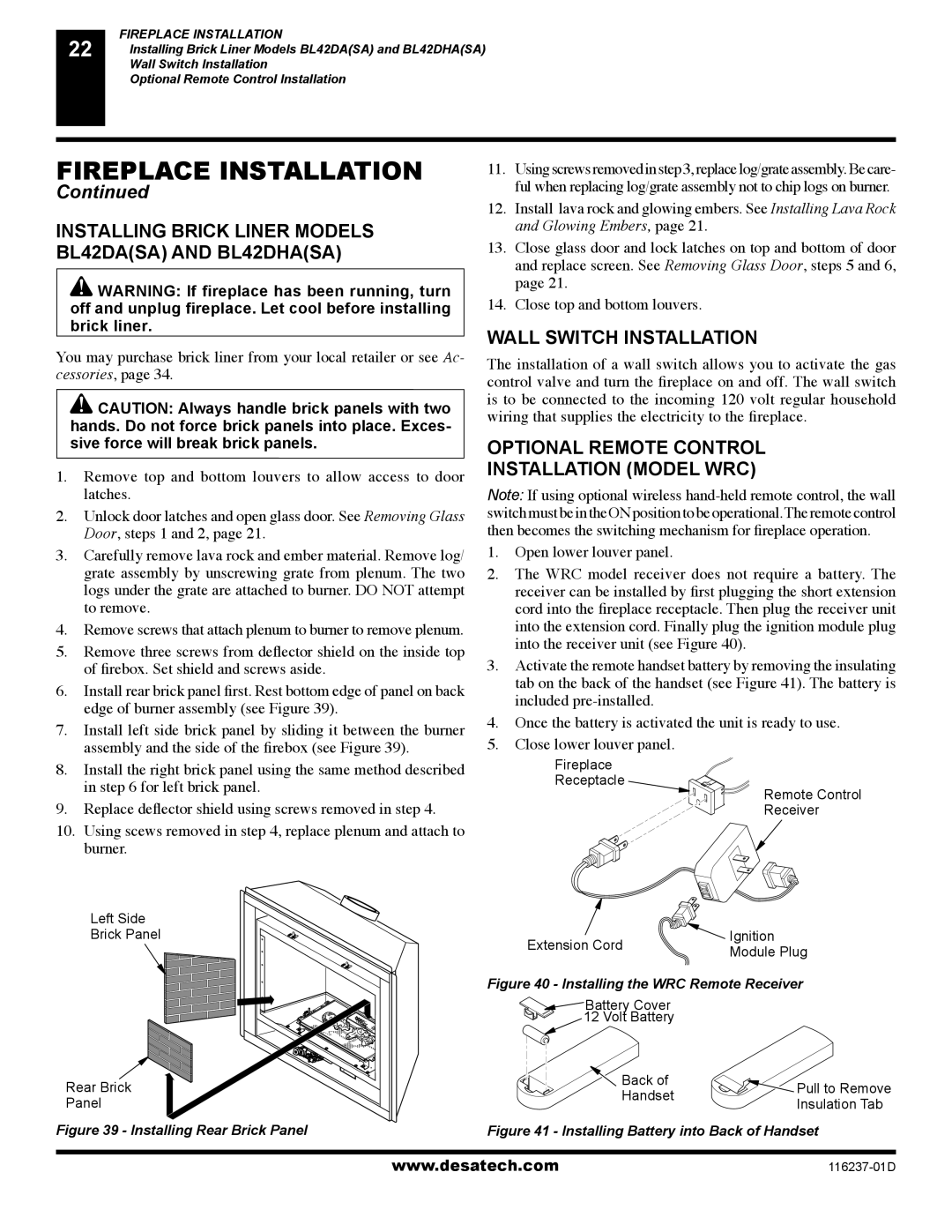(V)VC42NE Series, (V)VC42PE Series specifications
The Desa (V)VC42NE Series and (V)VC42PE Series are advanced heating systems designed for residential and commercial applications. These models offer a unique combination of efficiency, performance, and user-friendly features, catering to diverse heating needs.One of the standout features of both series is their exceptional energy efficiency. Utilizing cutting-edge technology, these heating solutions provide substantial savings on energy costs while minimizing environmental impact. The (V)VC42NE Series is particularly known for its low emissions, adhering to strict environmental regulations and contributing to cleaner air quality.
In terms of technology, the series incorporates innovative heating design and advanced materials. The high-efficiency burners ensure maximum heat output with minimal fuel consumption. Furthermore, the built-in diagnostics make it easy for homeowners and technicians to monitor performance and troubleshoot any issues that may arise, ensuring consistent and reliable operation over time.
The (V)VC42NE and (V)VC42PE models are equipped with user-friendly control systems. The intuitive interface allows users to set and adjust temperatures with ease, making it accessible for everyone. Additionally, these systems support programmable settings, enabling users to customize their heating schedules based on their lifestyle and preferences, thereby enhancing comfort and convenience.
Another essential characteristic of these series is their versatility in installation. With options for both vented and unvented configurations, users can choose the system that best fits their space and requirements. This flexibility allows for seamless integration into various environments, whether in homes, offices, or commercial establishments.
Safety is also a paramount focus in the design of the (V)VC42NE and (V)VC42PE Series. Built-in safety features, including flame failure devices and overheat protection, offer peace of mind to users by minimizing the risk of accidents.
Lastly, the sleek and modern appearance of these heating solutions ensures that they complement any décor. Their durable construction guarantees longevity, making the Desa series a reliable investment for those seeking effective heating solutions. In summary, the Desa (V)VC42NE Series and (V)VC42PE Series provide a potent combination of efficiency, safety, and user-friendly features, making them ideal choices for anyone in need of a dependable heating system.

